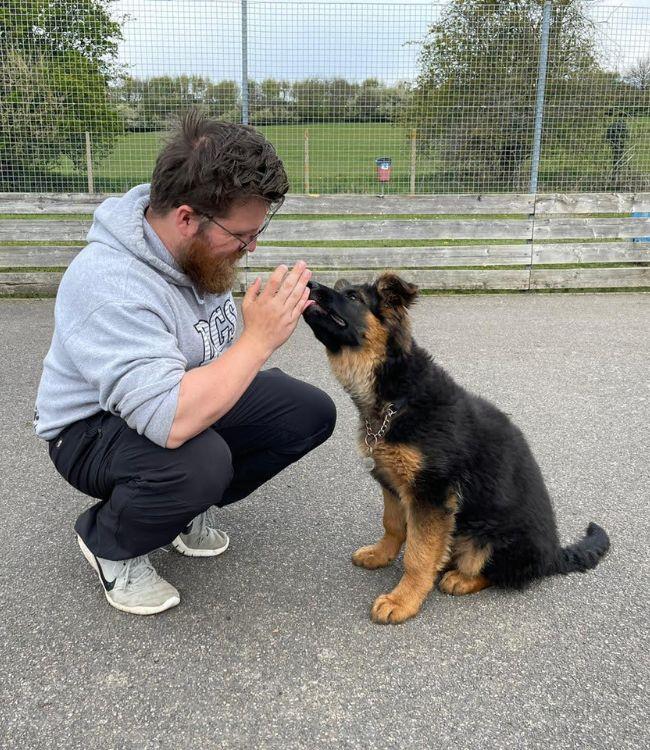Blog
Blog

My Dog Training Methods
When it comes to choosing a dog trainer, I believe every owner should be informed up front on the training methods that they will be using.
Why is this important?
Simply put, the training methods you use will not only affect your dog’s behaviour, but they will also affect their temperament, trust, mental & physical well-being, and their outlook on life. So whilst you may achieve short-term behaviour change, there are behavioural fallouts that, should they happen, will make your life more challenging and stressful.
TRAINING METHODS I DON’T USE
Physical Force
There is absolutely no need to use physical force to make a dog do something. Physical force applies to ear pinching, alpha rolls, kicking and kneeing.
Fear
If you are dealing with a dog who is scared of something, teaching them to fear something else more is not going to work. What normally happens is that the dog becomes more fearful of their original trigger due to the new and worse consequence.
Pain
Similarly, to fear, using pain to stop unwanted behaviour is usually going to cause more problems than it solves. I often hear from potential clients how their previous training, which involved pain, has caused the original behaviour to get worse or for a new, unforeseen behaviour to appear.
Aversive Tools
I do not use tools such as shock collars, spray collars, spray bottles, shake cans or choke chains. The main reason that I do not use these training tools is because they are designed to inflict pain or discomfort in the dog.
Secondly, these tools aren’t as effective as using positive reinforcement training. So, when considering what type of trainer to use consider how much time you will spend “training” your dog, in almost all cases, you will get better & quicker results, that last longer using positive reinforcement training.
WHY DON’T I USE THE ABOVE
Simply put, I believe that owning a dog comes with responsibility. That responsibility involves allowing dogs to be dogs, teaching them how we want them to behave, helping them feel safe and ensuring their wellbeing (both physical & mental) and in my mind that absolutely does not allow us to use any aversive training methods or tools.
TRAINING METHODS I DO USE
Positive Reinforcement
Positive reinforcement training involves rewarding dogs for the behaviour we want. Sounds simple right? That’s because it is. When we reinforce behaviour that we like, the dog will do it again, with enough practice that behaviour becomes second nature.
Ethical
Just because we can train our dogs to do something, should we? When it comes to dog training, I think it’s important to consider the ramifications of what we are teaching, this applies to the owner as much as the dog.
When it comes to changing a dog’s behaviour, we have to understand the reason for that behaviour. Despite what some trainers will tell you, all behaviour has a reason, reasons for your dog’s behaviour can be stress relief, boredom, fun, frustration and much more.
If we do decide to change the dog’s behaviour, we must make sure that the reason for the behaviour is resolved or given appropriate outlets. Failure to do that will likely cause problems down the road.
Regarding the owner, all trainers should be honest and upfront about the amount of time needed, the potential risks and how the training will work.
Prevention is better than cure
Dogs are learning all the time, that learning shapes how they view the world and how they behave in it. Learning all the time is great until it isn’t. If dogs are allowed to practice unwanted behaviour repeatedly, bad habits form and they become hard to stop.
That is why I take a prevention first attitude. If we stop the dog doing the unwanted behaviour, we can train them to behave appropriately and achieve the desired change quicker and easier. To find out more about prevention see below:
https://milesandemma.com/simple-preventive-dog-training/
https://www.thepitterpatteroftinypaws.co.uk/resources/the-power-of-good-management
If you’d like to chat about your dog’s struggles, why not book a free, no pressure phone consultation by clicking here.

